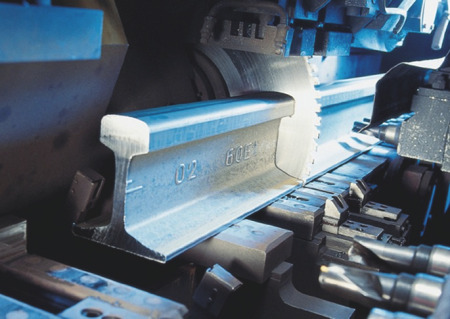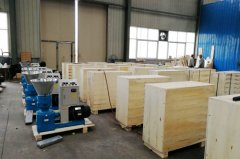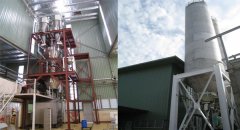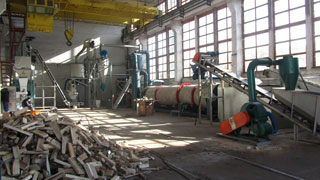Railroad track manufacturing and standards
In the railway transportation industry, tracks are key components to ensure the safe and stable operation of trains. As the global railroad track network continues to expand, so does the demand for high-quality tracks. To meet this market demand, AGICO has launched a new generation of high-performance rail products, specially designed for high-speed railways, heavy-haul freight, and urban rail transit, aiming to improve the safety, efficiency, and sustainability of railway transportation.
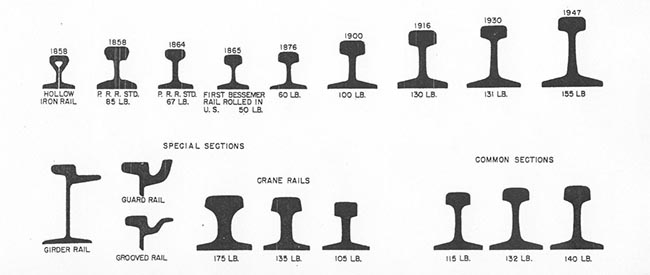
The manufacturing process of the AGICO railroad track
As a key component of the railway transportation system, the quality and performance of tracks directly affect the safety and operating efficiency of the railway. The manufacturing process of railroad tracks is the core factor that determines their quality.
1. Selection of basic materials for railway tracks
The first step in rail manufacturing is selecting the right raw materials. Generally, the manufacturing materials of railway tracks mainly include carbon steel, high manganese steel, and alloy steel.
- Carbon steel: Traditional railroad tracks mainly use carbon steel, which has good hardness and tensile strength and is suitable for general railway needs.
- High manganese steel: To improve the wear resistance and impact resistance of tracks, high manganese steel is widely used in heavy-haul railways and high-speed railways.
- Alloy steel: Under certain conditions, by adding alloy elements such as chromium, vanadium, and titanium to steel, the corrosion resistance, fatigue resistance, and service life of rails can be greatly improved.
2. Hot rolling process
Hot rolling is one of the most important processes in railroad track manufacturing. The rails are gradually formed by heating the billet and rolling it.
- Steel billet heating: First, heat the steel billet to above 1100°C to make it have good plasticity and facilitate subsequent rolling forming.
- Roll forming: After the heated steel billet is rolled repeatedly through multiple rolling units, it is gradually pressed into a rail with a specific cross-sectional shape. During the rolling process, temperature and pressure need to be strictly controlled to ensure the dimensional accuracy and structural uniformity of the rails.
- Finishing treatment: After rolling is completed, the track needs to undergo finishing treatment, including straightening, cutting, and grinding steps to ensure the smoothness and flatness of the rail surface and to reach the designed standard length.
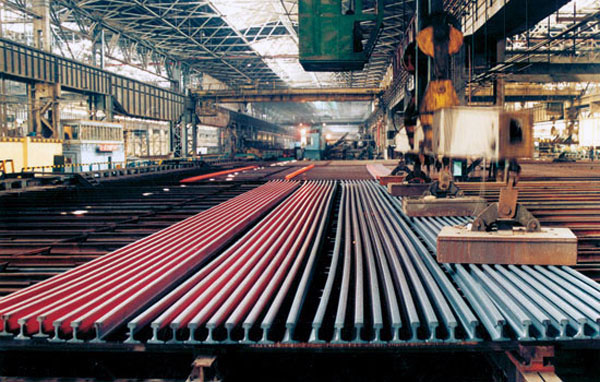
3. Heat treatment process
Heat treatment is a key process to improve the performance of railroad tracks. By controlling the heating and cooling process, the internal microstructure of the rails is changed, thereby improving its mechanical properties.
- Quenching: After the railroad tracks are heated to a certain temperature, they are quickly cooled (usually in water or oil), a process called quenching. Quenching can increase the hardness and wear resistance of rails, which is especially suitable for use under high-load conditions.
- Tempering: After quenching, tempering is usually performed to reduce the brittleness of the railroad tracks. Tempering involves reheating the rails at a lower temperature and cooling them slowly to give them better toughness and ductility.
4. Surface treatment
The surface treatment of railroad tracks is an important step in extending their service life. Common surface preparation methods include sandblasting, coating, and anti-corrosion treatments.
- Sandblasting: remove oxide scale and impurities on the railroad track surface by spraying sand particles at high speed to improve the smoothness and adhesion of the rail surface.
- Coating: Apply anti-rust oil or other protective coatings to the railroad track surface to prevent the rails from getting wet and rusting during use, especially in environments with high humidity.
- Anti-corrosion treatment: Hot-dip galvanizing or other anti-corrosion technologies are used to further improve the durability of the railroad tracks in harsh environments and extend their service life.
Railroad track standards

Chinese Standard
Light Rail Standard
| Standard: GB11264-89 | |||||||
|---|---|---|---|---|---|---|---|
| Size | Dimension(mm) |
Weight (kg/m) |
Material | Length(m) | |||
| Head(mm) | Height(mm) | Bottom(mm) | Web(mm) | ||||
| GB6KG | 25.4 | 50.8 | 50.8 | 4.76 | 5.98 | Q235B | 6-12 |
| GB9KG | 32.1 | 63.5 | 63.5 | 5.9 | 8.94 | Q235B | 6-12 |
| GB12KG | 38.1 | 69.85 | 69.85 | 7.54 | 12.2 | Q235B/55Q | 6-12 |
| GB15KG | 42.86 | 79.37 | 79.37 | 8.33 | 15.2 | Q235B/55Q | 6-12 |
| GB22KG | 50.3 | 93.66 | 93.66 | 10.72 | 23.3 | Q235B/55Q | 6-12 |
| GB30KG | 60.33 | 107.95 | 107.95 | 12.3 | 30.1 | Q235B/55Q | 6-12 |
| Standard: YB222-63 | |||||||
| 8KG | 25 | 65 | 54 | 7 | 8.42 | Q235B | 6-12 |
| 18KG | 40 | 90 | 80 | 10 | 18.06 | Q235B/55Q | 6-12 |
| 24KG | 51 | 107 | 92 | 10.9 | 24.46 | Q235B/55Q | 6-12 |
Heavy Rail Standard
| Standard: GB2585-2007 | |||||||
|---|---|---|---|---|---|---|---|
| Size | Dimension(mm) |
Weight (kg/m) |
Material | Length (m) | |||
| Head(mm) | Height(mm) | Bottom(mm) | Web(mm) | ||||
| P38KG | 68 | 134 | 114 | 13 | 38.733 | U71Mn | 12.5-25 |
| P43KG | 70 | 140 | 114 | 14.5 | 44.653 | U71Mn | 12.5-25 |
| P50KG | 70 | 152 | 132 | 15.5 | 51.514 | U71Mn | 12.5-25 |
| P60KG | 73 | 170 | 150 | 16.5 | 61.64 | U71Mn | 12.5-25 |
Crane Rail Standard
| Standard: YB/T5055-93 | |||||||
|---|---|---|---|---|---|---|---|
| Size | Dimension(mm) |
Weight (kg/m) |
Material | Length (m) | |||
| Head(mm) | Height(mm) | Bottom(mm) | Web(mm) | ||||
| QU 70 | 70 | 120 | 120 | 28 | 52.8 | U71Mn | 12 |
| QU 80 | 80 | 130 | 130 | 32 | 63.69 | U71Mn | 12 |
| QU 100 | 100 | 150 | 150 | 38 | 88.96 | U71Mn | 12 |
| QU 120 | 120 | 170 | 170 | 44 | 118.1 | U71Mn | 12 |
ASTMA1, AREMA Standard
| Standard: ASTMA1, AREMA | |||||||
|---|---|---|---|---|---|---|---|
| Size | Dimension(mm) |
Weight (kg/m) |
Material | Length (m) | |||
| Head(mm) | Height(mm) | Bottom(mm) | Web(mm) | ||||
| ASCE 25 | 38.1 | 69.85 | 69.85 | 7.54 | 12.4 | 700 | 6-12 |
| ASCE 30 | 42.86 | 79.38 | 79.38 | 8.33 | 14.88 | 700 | 6-12 |
| ASCE 40 | 47.62 | 88.9 | 88.9 | 9.92 | 19.84 | 700 | 6-12 |
| ASCE 60 | 60.32 | 107.95 | 107.95 | 12.3 | 29.76 | 700 | 6-12 |
| ASCE 75 | 62.71 | 122.24 | 122.24 | 13.49 | 37.2 | 900A/1100 | 12-25 |
| ASCE 85 | 65.09 | 131.76 | 131.76 | 14.29 | 42.17 | 900A/1100 | 12-25 |
| 90RA | 65.09 | 142.88 | 130.18 | 14.29 | 44.65 | 900A/1100 | 12-25 |
| 115RE | 69.06 | 168.28 | 139.7 | 15.88 | 56.9 | 900A/1100 | 12-25 |
| 136RE | 74.61 | 185.74 | 152.4 | 17.46 | 67.41 | 900A/1100 | 12-25 |
| 175LBs | 109.86 | 152.4 | 152.4 | 38.1 | 86.8 | 900A/1100 | 12-25 |
BS11: 1985 Standard
| Standard: BS11: 1985 | |||||||
|---|---|---|---|---|---|---|---|
| Size | Dimension(mm) |
Weight (kg/m) |
Material | Length (m) | |||
| Head(mm) | Height(mm) | Bottom(mm) | Web(mm) | ||||
| 50 O | 52.39 | 100.01 | 100.01 | 10.32 | 24.833 | 700 | 6-18 |
| 60 A | 57.15 | 114.3 | 109.54 | 11.11 | 30.618 | 900A | 6-18 |
| 75 A | 61.91 | 128.59 | 114.3 | 12.7 | 37.455 | 900A | 8-25 |
| 75 R | 61.91 | 128.59 | 122.24 | 13.1 | 37.041 | 900A | 8-25 |
| 80 A | 63.5 | 133.35 | 117.47 | 13.1 | 39.761 | 900A | 8-25 |
| 80 R | 63.5 | 133.35 | 127 | 13.49 | 39.674 | 900A | 8-25 |
| 90 A | 66.67 | 142.88 | 127 | 13.89 | 45.099 | 900A | 8-25 |
| 100 A | 69.85 | 152.4 | 133.35 | 15.08 | 50.182 | 900A | 8-25 |
| 113 A | 69.85 | 158.75 | 139.7 | 20 | 56.398 | 900A | 8-25 |
UIC860 Standard
| Standard: UIC860 | |||||||
|---|---|---|---|---|---|---|---|
| Size | Dimension(mm) |
Weight (kg/m) |
Material | Length (m) | |||
| Head(mm) | Height(mm) | Bottom(mm) | Web(mm) | ||||
| UIC50 | 70 | 152 | 125 | 15 | 50.46 | 900A/1100 | 12-25 |
| UIC54 | 70 | 159 | 140 | 16 | 54.43 | 900A/1100 | 12-25 |
| UIC60 | 74.3 | 172 | 150 | 16.5 | 60.21 | 900A/1100 | 12-25 |
JIS E1103-91/JISE 1101-93 Standard
| Standard: JIS E1103-91/JISE 1101-93 | |||||||
|---|---|---|---|---|---|---|---|
| Size | Dimension(mm) |
Weight (kg/m) |
Material | Length (m) | |||
| Head(mm) | Height(mm) | Bottom(mm) | Web(mm) | ||||
| JIS 15KG | 42.86 | 79.37 | 79.37 | 8.33 | 15.2 | JIS E standard | 9-10 |
| JIS 22KG | 50.8 | 93.66 | 93.66 | 10.72 | 22.3 | 9-10 | |
| JIS 30KG | 60.33 | 107.95 | 107.95 | 12.3 | 30.1 | 9-10 | |
| JIS 37A | 62.71 | 122.24 | 122.24 | 13.49 | 37.2 | 10-25 | |
| JIS 50N | 65 | 153 | 127 | 15 | 50.4 | 10-25 | |
| CR 73 | 100 | 135 | 140 | 32 | 73.3 | 10-12 | |
| CR 100 | 120 | 150 | 155 | 39 | 100.2 | 10-12 | |
EN 13674-1-2003 Standard
| Standard: EN 13674-1-2003 | |||||||
|---|---|---|---|---|---|---|---|
| Size | Dimension(mm) |
Weight (kg/m) |
Material | Length (m) | |||
| Head(mm) | Height(mm) | Bottom(mm) | Web(mm) | ||||
| 49 E1 | 67 | 149 | 125 | 14 | 49.39 | R260/R350HT | 12-25 |
| 49 E2 | 67 | 148 | 125 | 14 | 49.1 | R260/R350HT | 12-25 |
| 50 E1 | 65 | 153 | 134 | 15.5 | 50.37 | R260/R350HT | 12-25 |
| 50 E2 | 72 | 151 | 140 | 15 | 49.97 | R260/R350HT | 12-25 |
| 50 E4 | 70 | 152 | 125 | 15 | 50.46 | R260/R350HT | 12-25 |
| 50 E5 | 67 | 148 | 135 | 14 | 49.9 | R260/R350HT | 12-25 |
| 50 E6 | 65 | 153 | 140 | 15.5 | 50.9 | R260/R350HT | 12-25 |
| 54 E1 | 70 | 159 | 140 | 16 | 54.77 | R260/R350HT | 12-25 |
| 54 E2 | 67.01 | 161 | 125 | 16 | 53.82 | R260/R350HT | 12-25 |
| 54 E3 | 67 | 154 | 125 | 16 | 54.57 | R260/R350HT | 12-25 |
| 55 E1 | 62 | 155 | 134 | 19 | 56.03 | R260/R350HT | 12-25 |
| 60 E1 | 72 | 172 | 150 | 16.5 | 60.21 | R260/R350HT | 12-25 |
DIN536 Standard
| Standard: DIN536 | |||||||
|---|---|---|---|---|---|---|---|
| Size | Dimension(mm) |
Weight (kg/m) |
Material | Length (m) | |||
| Head(mm) | Height(mm) | Bottom(mm) | Web(mm) | ||||
| A55 | 55 | 65 | 150 | 31 | 31.8 | 900A | 10-12 |
| A65 | 65 | 75 | 175 | 38 | 43.1 | 900A | 10-12 |
| A75 | 75 | 85 | 200 | 45 | 56.2 | 900A | 10-12 |
| A100 | 100 | 95 | 200 | 60 | 74.3 | 900A | 10-12 |
| A120 | 120 | 105 | 220 | 72 | 100 | 900A | 10-12 |
Grooved Rail Standard
| Size | Height (mm) | Bottom (mm) | Head A (mm) | Head B(mm) | Channel A (mm) | Channel B (mm) | Web (mm) | Weight (kg/m) |
|---|---|---|---|---|---|---|---|---|
| 59R1 | 180 | 180 | 113 | 56 | 42 | 15 | 12 | 58.97 |
| 59R2 | 180 | 180 | 113 | 55.83 | 42.52 | 14.65 | 12 | 58.14 |
| 60R1 | 180 | 180 | 113 | 56 | 36 | 21 | 12 | 60.59 |
| 60R2 | 180 | 180 | 113 | 55.83 | 36.34 | 20.83 | 12 | 59.75 |
IS3443-1980 Standard
| Indian Standard Railway | |||||||
|---|---|---|---|---|---|---|---|
| standard:IS3443-1980 | |||||||
| Size | Dimension | Weight (kg/m) |
Length (m) |
Material | |||
| Head(mm) | Height(mm) | Bottom(mm) | Web(mm) | ||||
| ISCR50 | 51.2 | 90 | 90 | 20 | 29.8 | 9-12 |
U71Mn |
| ISCR60 | 61.3 | 105 | 105 | 24 | 40 | 9-12 | |
| ISCR70 | 70 | 120 | 120 | 28 | 52.8 | 9-12 | |
| ISCR80 | 81.7 | 130 | 130 | 32 | 64.2 | 9-12 | |
| ISCR100 | 101.9 | 150 | 150 | 38 | 89 | 9-12 | |
| ISCR120 | 122 | 170 | 170 | 44 | 118 | 9-12 | |
Australian Standard
| Australian Standard Railway | |||||||
|---|---|---|---|---|---|---|---|
|
standard:AS1085 |
|||||||
| Size | Dimension | Weight (kg/m) |
Length (m) |
Material | |||
| Head(mm) | Height(mm) | Bottom(mm) | Web(mm) | ||||
| 31KG | 63.5 | 117.5 | 108 | 11.5 | 31.5 | 8-25 | 900A/1100 |
| 47KG | 70 | 141.3 | 127 | 14.3 | 46.5 | ||
| 50KG | 70 | 154 | 127 | 15 | 50.8 | ||
| 60KG | 70 | 170 | 146 | 16.5 | 61 | ||
| 68KG | 73.4 | 186 | 152 | 17.5 | 67.6 | ||
| 73KG | 70 | 157 | 146 | 32 | 73.63 | ||
| 86KG | 102 | 102 | 155 | 84.11 | 85.5 | ||
| 89KG | 102 | 114 | 178 | 51 | 89.81 | ||
South African Standard
| South African Standard Railway | |||||||
|---|---|---|---|---|---|---|---|
|
standard:ISCOR |
|||||||
| Size | Dimension | Weight (kg/m) |
Length (m) |
Material | |||
| Head(mm) | Height(mm) | Bottom(mm) | Web(mm) | ||||
| 15KG | 41.28 | 76.2 | 76.2 | 7.54 | 14.905 | 9 |
700 |
| 22KG | 50.01 | 95.25 | 95.25 | 9.92 | 22.542 | 9 | |
| 30KG | 57.15 | 109.54 | 109.54 | 11.5 | 30.25 | 9 | |
| 40KG | 63.5 | 127 | 127 | 14 | 40.31 | 9-25 |
900A |
| 48KG | 68 | 150 | 127 | 14 | 47.6 | 9-25 | |
| 57KG | 71.2 | 165 | 140 | 16 | 57.4 | 9-25 | |
Chinese Standard
Chinese Standard Steel Rail Chemical Composition:
| Chemical Composition of Chinese Standard(%) | ||||||
|---|---|---|---|---|---|---|
| Grade | C | Si | Mn | Max | V | |
| P | S | |||||
| Q235 | 0.12~0.20 | ≤0.3 | 0.3~0.7 | 0.045 | 0.045 | - |
| Q345 | ≤0.20 | ≤0.55 | 1.00-1.60 | 0.040 | 0.04 | - |
| 20MnK | 0.15-0.26 | 0.20-0.60 | 1.20-1.60 | 0.050 | 0.050 | - |
| M540 | 0.20-0.29 | 0.17-0.37 | 1.60-1.80 | 0.045 | 0.045 | - |
| 50Mn | 0.48-0.56 | 0.17-0.37 | 0.70-1.00 | 0.035 | 0.035 | - |
| 55Q | 0.50-0.60 | 0.15-0.35 | 0.60-0.90 | 0.045 | 0.045 | - |
| U71Mn | 0.65-0.76 | 0.15-0.35 | 1.10-1.40 | 0.040 | 0.040 | - |
| U75v | 0.71-0.80 | 0.50-0.80 | 0.70-1.05 | 0.030 | 0.030 | 0.04-0.12 |
| 900A | 0.60-0.80 | 0.10-0.50 | 0.80-1.30 | 0.040 | 0.040 | - |
| R260 | 0.60-0.82 | 0.13-0.60 | 0.65-1.25 | 0.030 | 0.030 | - |
| R350H | 0.70-0.82 | 0.13-0.60 | 0.60-1.25 | 0.025 | 0.025 | - |
| ASSZ-1 | 0.76-0.82 | 0.10-0.50 | 0.90-1.15 | 0.030 | 0.030 | - |
Chinese Standard Steel Rail Mechanical Property:
| Mechanical Properties of Chinese Standard | ||||
|---|---|---|---|---|
| Grade | Yield strength (Mpa) | Tensile strength (Mpa) | Elongation (%) | Hardness (%) |
| Q235 | ≥235 | 375-460 | ≥26 | - |
| Q345 | ≥345 | 470-630 | ≥21 | - |
| 20MnK | ≥355 | ≥510 | ≥18 | - |
| M540 | ≥390 | ≥540 | ≥18 | - |
| 50Mn | - | ≥645 | ≥13 | - |
| 55Q | - | ≥685 | - | ≥197 |
| U71Mn | - | ≥880 | ≥9 | 240-270 |
| U75v | - | ≥980 | ≥9 | 240-270 |
| 900A | - | ≥880 | ≥10 | 240-270 |
| R260 | - | ≥880 | ≥10 | 260-300 |
| R350H | - | ≥1175 | ≥9 | 350-390 |
| ASSZ-1 | - | ≥980 | ≥9 |
≥275 |
Since the launch of the product, AGICO has reached cooperation with several domestic and foreign railway companies, and customer feedback has been positive. Our railroad track products are widely recognized and highly praised for their excellent performance and reliable quality. AGICO looks forward to working with global partners to provide excellent rail products and professional technical services for railway construction around the world and achieve win-win development.


